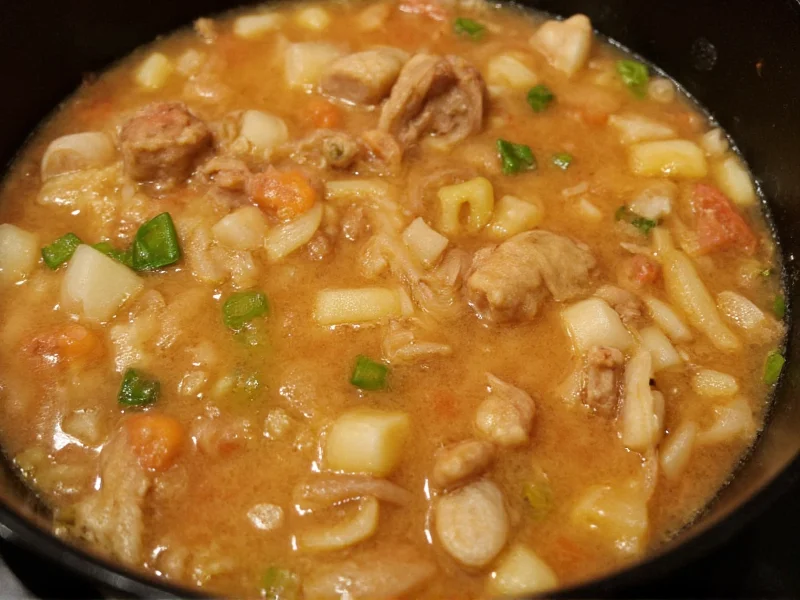Many searchers mistakenly type “onion soup soup” when seeking information about this beloved culinary staple. The repetition likely stems from uncertainty about proper terminology or confusion between similar soup varieties. True onion soup represents one of the world's most历史悠久 comfort foods, with roots tracing back to ancient Roman cuisine.
The Historical Journey of Onion Soup
Onion soup's documented history begins in 18th century France, where it emerged as affordable sustenance for the working class. French onion soup (soupe à l'oignon) gained international recognition when it appeared at the 1867 Paris World Exposition. The dish's evolution reveals fascinating cultural adaptations:
| Cultural Variation | Distinctive Features | Historical Origin |
|---|---|---|
| French Onion Soup | Gruyère-topped, wine-enriched beef broth | 1700s Parisian street food |
| German Zwiebeluppe | Caraway seeds, vinegar finish | 19th century Rhineland |
| American Pub Style | Thicker broth, varied cheese blends | 20th century restaurant adaptation |
Essential Components of Authentic Preparation
Creating genuine French onion soup requires attention to specific elements that distinguish it from imitations. Professional chefs emphasize these non-negotiable components:
- Onion selection: Yellow onions provide ideal balance of sweetness and pungency; shallots add complexity in premium preparations
- Caramelization technique: Minimum 45-minute slow cooking to develop fond without burning
- Broth foundation: Rich beef stock (traditionally homemade) with optional veal stock enhancement
- Acid component: Dry white wine or sherry added after caramelization
- Finishing elements: Baguette slices and aged Gruyère cheese for authentic gratiné topping
Common Preparation Mistakes to Avoid
Many home cooks encounter pitfalls when attempting classic onion soup preparation. Understanding these frequent errors improves results significantly:
- Rushing caramelization: Turning heat too high creates bitter compounds instead of developing natural sugars
- Incorrect onion quantity: Proper ratio requires 4-5 pounds of onions per standard recipe
- Using pre-shredded cheese: Freshly grated Gruyère melts properly; pre-shredded contains anti-caking agents
- Skipping deglazing: Not scraping fond from caramelization stage wastes flavor foundation
- Overloading with thyme: Traditional preparation uses minimal fresh thyme to avoid overpowering onion flavor
Modern Interpretations and Dietary Adaptations
Contemporary chefs have developed thoughtful variations accommodating diverse dietary needs while preserving essential flavor profiles. Successful adaptations maintain the dish's soul while addressing modern requirements:
Vegan versions achieve depth through mushroom stock and nutritional yeast, while maintaining the critical slow-caramelization step. Some innovative chefs incorporate smoked onions for added complexity without animal products. Gluten-free adaptations work best with sturdy gluten-free bread alternatives that withstand broth saturation.
Professional kitchens increasingly offer—and home cooks can replicate—a lighter version using reduced-sodium vegetable broth and increased leek content. This variation maintains authenticity while addressing health-conscious preferences. The key remains respecting the fundamental technique: patient onion transformation.
Serving Traditions and Pairing Wisdom
Authentic French onion soup service follows specific traditions that enhance the experience. The dish traditionally appears as a starter in multi-course French meals, served in specialized crocks that retain heat. Temperature management proves critical—the soup must arrive piping hot to properly melt the cheese topping.
Classic pairings include:
- Dry French cider or light-bodied red wine like Beaujolais
- Simple green salad with vinaigrette
- Crusty bread for dipping (beyond the topping)
Avoid pairing with heavy main courses, as traditional onion soup serves as a substantial starter. Many Parisian bistros still follow the custom of presenting the toasted bread separately, allowing diners to adjust bread-to-soup ratio personally.
What's the difference between French onion soup and regular onion soup?
French onion soup specifically features caramelized onions in beef broth with wine, topped with baguette and melted Gruyère cheese. Regular onion soup refers to simpler preparations without the traditional finishing elements, often using chicken or vegetable broth without the signature cheese topping.
How long does proper onion caramelization take for authentic soup?
Authentic French onion soup requires 45-60 minutes of slow caramelization. Rushing this process by increasing heat creates bitter flavors instead of developing the natural sugars. Professional chefs maintain medium-low heat with occasional stirring to achieve proper fond development without burning.
Can I make French onion soup without alcohol?
Yes, though wine contributes important acidity and complexity. Substitute with additional broth plus 1 tablespoon apple cider vinegar or sherry vinegar added after caramelization. The vinegar mimics wine's role in balancing richness while enhancing onion flavors.
Why does my homemade onion soup taste bitter?
Bitterness typically results from burning onions during caramelization. Onions contain natural sugars that caramelize at specific temperatures—exceeding this threshold creates bitter compounds. Maintain medium-low heat, stir occasionally, and consider adding a pinch of sugar to help control the caramelization process without burning.
What cheese works best as substitute for Gruyère?
Comté makes the closest substitute with similar nutty flavor and melting properties. Emmental works well for meltability though milder in flavor. Avoid pre-shredded cheeses containing anti-caking agents that prevent proper melting. For vegan versions, high-quality smoked Gouda-style plant cheese provides comparable depth.











 浙公网安备
33010002000092号
浙公网安备
33010002000092号 浙B2-20120091-4
浙B2-20120091-4